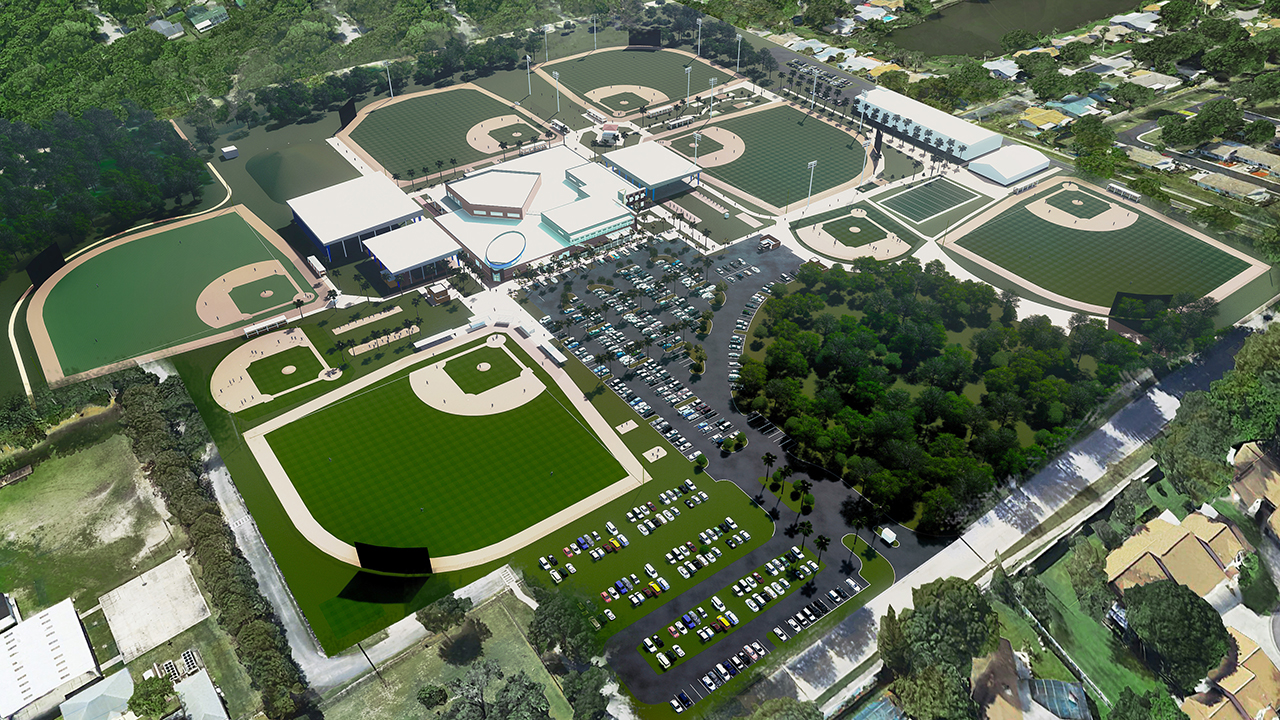DUNEDIN, Fla. — There were no glamour spots to pick from back in 1976, when the fledgling Toronto Blue Jays began searching for a new spring home. The prime spots in Florida were already taken and it was cities on the make, seeking a boost in exposure and status by hosting a big-league club during training camp, that came calling.
“The problem wasn’t finding a place, it was finding the right place,” Paul Beeston, the club’s first employee who is now president emeritus, says over the phone, guffawing at the memory. “None of them were going to have a major-league calibre stadium, but back then, no one had the kind of facilities that are currently the norm.
“Cecil Englebert, who was the mayor of Dunedin at the time, was promoting big time for us to come down there. They were by far the most aggressive.”
Dunedin won the day back in 1976 and Thursday will mark the 43rd straight year that the Blue Jays open camp in the sleepy little city 35 kilometres west of Tampa, just north of neighbouring Clearwater, with their first workout for pitchers and catchers.
That uninterrupted run has survived Blue Jays’ threats to leave in 1997 (when the city issued a news release saying the team would leave as early as the following spring), a near partnership with the Houston Astros on a shared Palm Beach Gardens complex scuttled in 2014 by complaints from neighbouring residents, and the club’s recent demand for a state-of-the-art training facility, one that was ultimately met, leading to a new 25-year lease.
Work has already begun on the new facility on the Bobby Mattick Training Center site (which is closed to fans this spring because of the construction), while a refurbishment of Dunedin Stadium, which was built in 1990 on the site of the original Grant Field and renovated in February 2002, starts once the pre-season ends.

“If you think the ballpark is quaint right now, you should have seen (Grant Field) back then because it was nothing more than what we could call a fairgrounds ballpark — it was as simple as that,” says Beeston. “What’s now the Bobby Mattick facility was just two diamonds — but we didn’t even have a farm team at that point, so it all would work out well for us.”
The Blue Jays started their initial search for a spring home by sending Gerry Snyder, the late Montreal sports insider and city councillor credited with helping secure the Expos, on a tour of various prospective sites. He suggested Dunedin to then president and GM Peter Bavasi, who endorsed the decision and gained board approval for it.
“I want a place where we can establish an identity with Toronto,” Bavasi told the Toronto Star after an agreement was reached in August 1976.
Helping sway the Blue Jays on Dunedin then, as now, were two utilitarian selling points:
• It’s only a 30-minute drive from the Tampa airport, serviced with multiple daily flights to and from Toronto, to Dunedin Stadium
• There is a convenient cluster of teams nearby; back then it was the Phillies in Clearwater, the Mets and Cardinals in St. Petersburg, the Reds in Tampa, and the Pirates in Bradenton, today it’s still the Phillies in Clearwater and the Pirates in Bradenton, along with the Yankees in Tampa, and Orioles in Sarasota.
“You could put a spring training schedule together very easily — it all made sense from a geography point of view,” says Beeston. “The one problem with Dunedin is that we knew we were never going to have the major-league and minor-league (sides) together as long as we stayed there because there’s no space to put in a four-diamond clover leaf by the stadium.”
That was the main concern current Blue Jays president and CEO Mark Shapiro had while negotiating the deal on the upcoming upgrades. Dunedin Stadium and the Bobby Mattick Training Center are 5.5 kilometres apart, which is only a 10-minute drive in good traffic but still creates a gulf between the two groups.
The Blue Jays run their big-league camp out of Dunedin Stadium with the minor-leaguers at Bobby Mattick, but once the new facility is up and running next spring, all operations will be centred out of the complex, with players busing over to the ballpark for Grapefruit League games.
[relatedlinks]
Pinellas County is footing the largest share of the bill for the project, contributing $41.7 million. The Blue Jays are kicking in $20 million, the state of Florida is contributing $13.7 million, and the city of Dunedin is providing nearly $6 million plus land.
Not bad for a city that didn’t even have a mall when the Blue Jays first arrived in 1977.
“We watched Dunedin grow,” says Beeston. “It had maybe four or five stores downtown at that point. At one time, Highway 19 had nothing on it as you went north on it. You didn’t see all the malls that are there at the present time. So we’ve been there as the city has grown and it’s a terrific place.”
NOTES: The Blue Jays are close to a minor-league deal that will reunite them with Canadian right-hander John Axford. The native of Port Dover, Ont., made clear during the Baseball Canada awards banquet last month that he was seeking a return to Toronto. … Infielder Lourdes Gurriel Jr. and his older brother, Houston Astros utility man Yulieski Gurriel, are now being represented by Magnus Sports.








